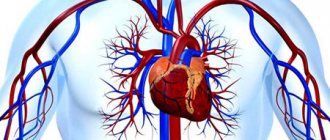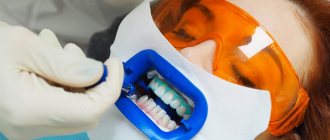Two-stage dental implantation
is a classic implantation technique that involves two stages:
- Installation of the implant and its engraftment into the bone tissue (osseointegration) within 3 - 6 months.
- Fixation of the gum former and after 2 weeks - fixation of a temporary prosthesis on the implant, and later - a permanent one.
3 reasons to contact Esthetic Classic Dent
One of the important features of the two-stage method is the high demands placed on bone tissue.
.
The fact is that after the loss of teeth, jaw atrophy gradually occurs, and the bone volume will not be enough to implant implants. Therefore, quite often before two-stage implantation it is necessary to carry out bone tissue augmentation
.
After this procedure, you need to wait for complete osseointegration of the implanted material, and only then install the implants. Usually this becomes possible after 3 - 4 months
.
Indications and contraindications
Two -stage dental implantation is most often used for prosthetics of one or several teeth in the lateral zone
.
This is due to the fact that the chewing teeth bear the maximum mechanical load. If the implant is immediately subjected to such strong pressure, the tissue around it may become inflamed, resulting in rejection of the artificial root. Therefore, a temporary crown
is not installed during the implant healing period. However, in the chewing area, its absence will not be noticeable to others.
This technology is also used when installing implants for subsequent fixation of a complete denture on them in the absence of all teeth. To securely secure a removable or fixed full denture with fourteen crowns
, you will need four to eight implants on one jaw. And a prosthesis that replaces three consecutive teeth will be firmly held on two implants.
Two-stage implantation is not performed if the patient has the following contraindications:
- tuberculosis;
- osteoporosis;
- oncological diseases;
- poor blood clotting;
- diseases of the immune system;
- chronic failure of internal organs.
What are the alternatives?
One-stage implantation with immediate loading
Two-stage implantation is in many ways inferior to the method with immediate loading. However, each method has its own specific indications - it is the classical protocol that is recommended to a greater extent for single restorations, when it is necessary to achieve the best aesthetics. Whereas single-stage implantation is used to a greater extent in case of multiple missing teeth and solves the problems of complete adentia much more effectively, especially against the background of bone tissue atrophy, periodontitis or periodontal disease.
Read more about implantation with immediate loading >>>
Single-stage implantation
This method is used exclusively when it is necessary to remove teeth: the implant is installed simultaneously in the hole where the root of the living tooth was located. Depending on the clinical picture, either a one-stage or a two-stage protocol can be applied.
Read more about one-stage implantation >>>
1 Lars Schropp, A. Wenzel, L. Kostopoulos, et al. Bone Healing and Soft Tissue Contour Changes Following Single-Tooth Extraction: A Clinical and Radiographic 12-Month Prospective Study. 2 Paraskevich V.L. Dental implantology. 2006. 3 According to the International Implant Foundation (IF).
Doctors at our clinic
Shmatov Konstantin Vladimirovich
More about the doctor
Shalygin Andrey Viktorovich
More about the doctor
Kim Yulia Vyacheslavovna
More about the doctor
Our certificates and licenses
Advantages of the method
The main advantage of two-stage dental implantation is the minimal risk of implant rejection. However, this technology has other important advantages.
- Ideal aesthetics due to the formation of an even gingival contour and the use of individual abutments.
- The ability to replace any number of teeth in a row with single crowns or dental bridges without artificial gums.
- Reducing the cost of prosthetics through the use of removable dentures that are securely fixed to implants, do not fall out and do not cause discomfort.
Question answer
What is combined implantation?
This is a combination of classical and express implantation methods. It is used in cases where it is necessary to find a compromise between saving time and reliability of treatment. For example, when replacing front teeth with prosthetics, thin artificial rods are installed for quick temporary restoration. And for teeth that bear a large chewing load - volumetric according to the classical method, selecting the ideal shape and size.
Levin Dmitry Valerievich
Maxillofacial surgeon, chief physician of the Center
Description of two-stage dental implantation
Preparation
Before the operation, each patient undergoes tests to identify possible contraindications and undergoes X-ray diagnostics so that the doctor can calculate the future location of the implants based on photographs of the jaw. In addition, oral cavity sanitation is carried out, including professional hygiene, treatment of caries and gum diseases
.
Gum opening
In order to reach the jawbone where the artificial root will be implanted, the doctor applies local anesthesia and uses a surgical scalpel to separate the flap from the gum. This can also be done using a laser beam, which significantly reduces tissue trauma and promotes rapid healing.
Implant installation
Dental cutters create a depression in the jawbone that matches the diameter of the implant. An artificial root is installed into it using special equipment.
. If it is discovered that there is not enough bone tissue, it is replanted. Then the gum is sutured and the patient goes home.
Key Features
Two-stage delayed dental implantation is the most common prosthetic protocol.
The whole process requires two stages: the first is installation of implants, the second is prosthetics. Unlike the immediate loading method, in this situation a rather impressive period of time passes between the two phases, from 3-4 months or more. Among the features of the two-stage method are high demands on bone tissue, so it is often necessary to resort to the procedure of increasing it. Despite this, this method is more effective in cases of single restorations and when it is necessary to restore anterior teeth, where aesthetics are important.
Main characteristics of the procedure:
- allows you to achieve maximum aesthetics,
- need a bone graft
- not recommended for inflammation of periodontal tissues,
- not suitable for smokers,
- the implants are fixed strictly vertically, parallel to each other,
- two-component implants with separate abutments are used,
- the prosthesis is installed only after complete fusion of the implant with the bone tissue.
Temporary prosthesis
After 3 - 6 months, when the doctor is convinced that the implant is stabilized in the bone, a gum former is installed on it, since the gum line, due to the lack of a crown, may noticeably drop during this time. After two weeks, the former is removed, an abutment is installed and a temporary prosthesis is secured.
Permanent prosthesis
Only after complete engraftment of the implant is the temporary prosthesis replaced with a permanent one. In the lower jaw this process usually takes 2 - 3 months
, in the top -
from 3 to 5 months
. Metal-ceramics or zirconium dioxide can be recommended as materials for permanent prosthetics in the chewing area.
What is better: two-stage, one-stage or one-stage implantation? We have described each of these services and you can view each option by following the links to make an informed decision. And if you don’t want to wait, leave a request or call us and our specialists will advise you.
Possible obstacles
Already in the first 3-4 months after tooth extraction, along with the root, the bone tissue shrinks to such a size that it is often not possible to install a classic root-shaped implant1. That is why bone grafting is required - on the upper jaw in the sinus area this is a sinus lift, and on other segments - bone block transplantation. In case of slight bone resorption, an implant can be installed simultaneously with the replanting of bone chips or artificial material - synthetic bone.
The need for the procedure is explained by the fact that screw root-shaped implants are installed strictly vertically and only in the alveolar, spongy, that is, the central layer of bone tissue. Namely, it is primarily subject to resorption and various inflammatory processes. Therefore, before implantation, it is necessary to restore the bone tissue.
Press about us
Reviews from our patients
Vladislav Topalov
I want to share a miracle with you. Yes Yes. MIRACLE. In 2022 I had my wisdom tooth removed. If anyone remembers, I wrote about it. Then I had to remove 3 more... and, as always happens, I gave up on it... a year and a half passed and I was told, as in the case of the first one, that I urgently needed to remove another one. And I decided that I was not ready to remove 3 more, one every year and a half. I called Kostya and asked him to delete 3 at once!!! Yes Yes! 3 at once! Under anesthesia. The operation was scheduled for 9.01. That is, yesterday. I’ll say it right away! Both then and now I PAID FOR EVERYTHING. I SHARE with YOU from the bottom of my heart, and not because they are doing something for me for free!!!! I, like 99% of us, am afraid of the dentist. I’m not afraid, of course, because I understand technology, anesthesia, etc.... but I'm afraid. Guys!!! I'M HAPPY! Yesterday, 3 teeth were removed in 15 minutes. Under sedation!!! I slept like a baby! Moreover - NOT A SINGLE SEAMLESS. Nothing hurts today. The face is NOT swollen. You can see it in the photo. I came today to see the doctor. If anyone needs to have their teeth removed - I PERSONALLY tell you - go to Konstantin Vladimirovich! He has GOLDEN hands!! Ahhh yes! I also DO NOT TAKE ANALGESICS!!! Yes, yes, you didn’t think so!!! He removed it so delicately that it doesn’t even hurt. Do you believe this? I'm not very... and all mine too. It is fantastic! Kostya, dear! God grant you health!!! Thank you so much!
Review on Instagram Read other reviews
Prices for services
Implantation Straumann Roxolid SLActive RUB 52,000.
Implantation Straumann Roxolid 44,000 rub. Consultation with a specialist 500 rub. Extended consultation of several specialists with the development of a comprehensive treatment plan RUB 1,500. Closed sinus lift 18,000 rub. Open Sinus – lifting 47,000 rub. Guided bone regeneration (restoration of the height and width of the alveolar ridge) (for a segment of up to 4 teeth) RUB 40,000. Bone grafting using an autologous bone block RUB 56,000. Implantation Nobel (Replace CC/Parallel CC) RUR 44,000. Implantation Osstem (Korea) 29,000 rub. Implantation whiteSky (Bredent) 85,000 rub. Expert doctor:
Karyatov Vitaly Vladimirovich
Dental surgeon, implantologist










